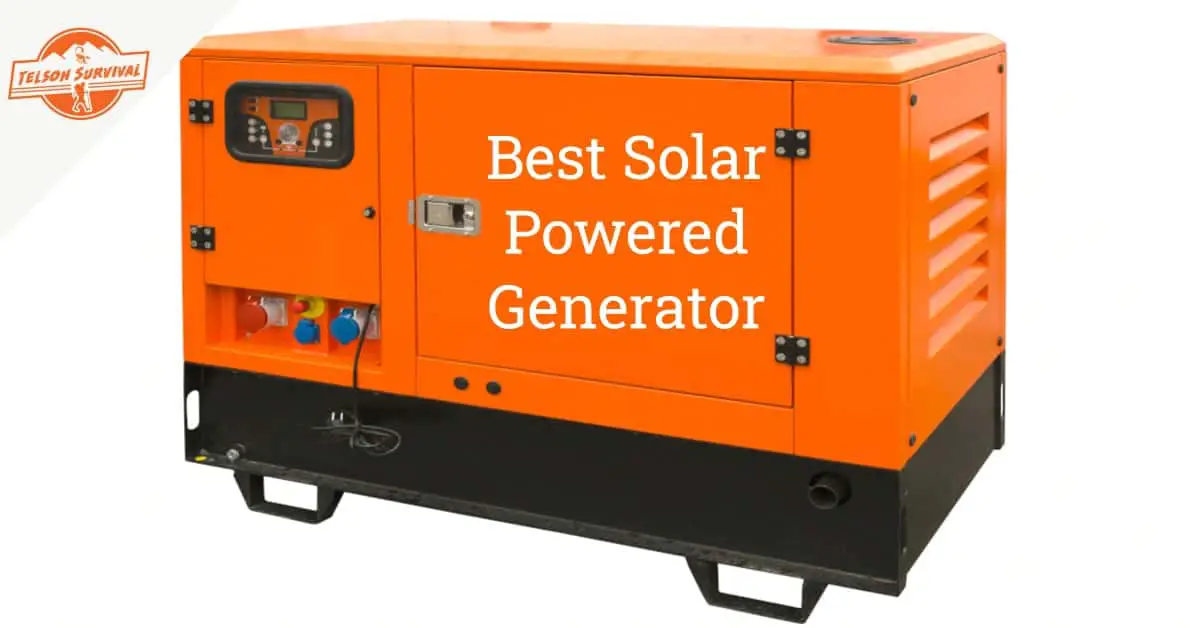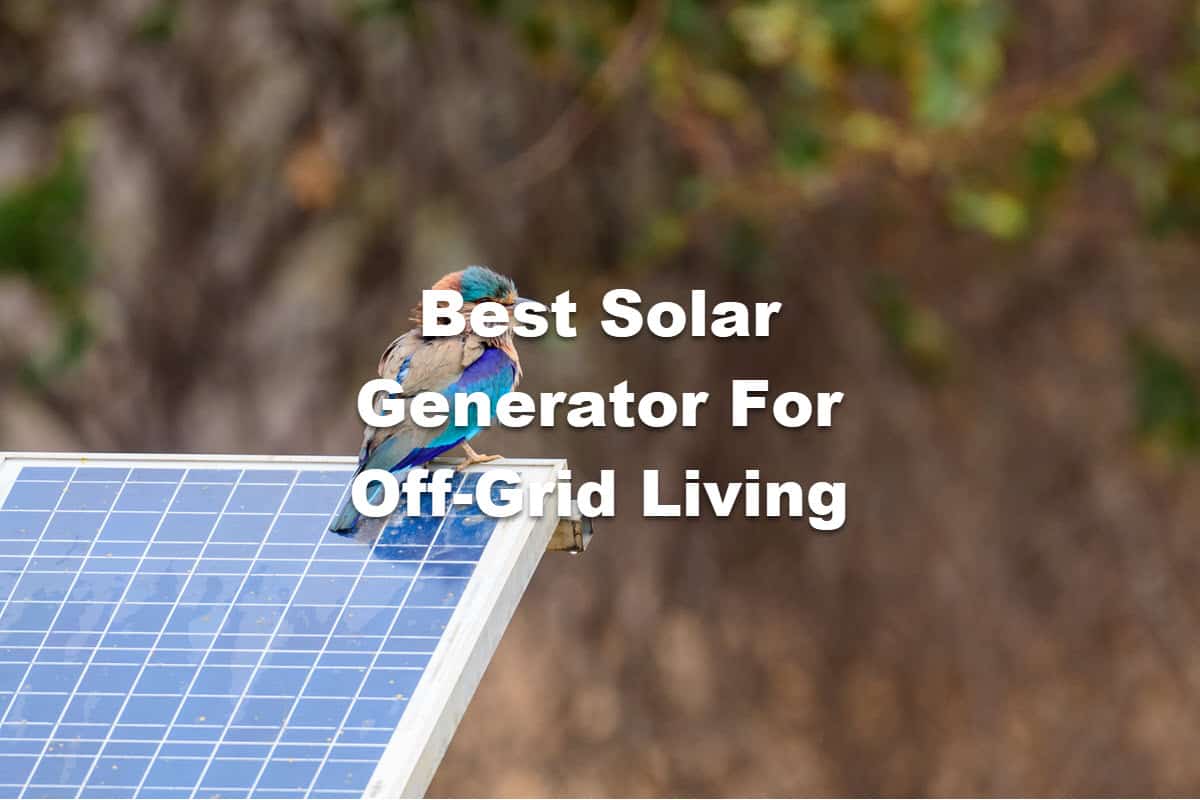Best portable solar generator for off grid living – Best portable solar generator for off-grid living: The demand for reliable, sustainable power solutions is surging as more people embrace off-grid lifestyles. This growing trend necessitates a deep dive into the world of portable solar generators, exploring their capabilities, limitations, and the crucial factors to consider before making a purchase. Choosing the right system can mean the difference between comfortable self-sufficiency and frustrating power outages.
This guide navigates the complexities of selecting the ideal portable solar generator for your off-grid needs. We’ll cover essential aspects like power capacity, battery technology, solar panel efficiency, and safety regulations, equipping you with the knowledge to make an informed decision. From calculating your energy consumption to understanding the nuances of different battery chemistries, we’ll illuminate the path to a reliable and sustainable power source for your off-grid haven.
Cost and Maintenance

The transition to off-grid living powered by a portable solar generator represents a significant investment, demanding careful consideration of both upfront and long-term expenses. Understanding these costs is crucial for making an informed decision and budgeting effectively for this lifestyle change. Factors influencing the overall cost include system size, component quality, and installation complexity.Initial investment costs for a portable solar generator system vary considerably depending on power needs.
A basic system suitable for powering essential appliances might cost several hundred dollars, while a more comprehensive setup capable of handling higher energy demands could easily reach several thousand. This initial outlay covers the solar panels, the generator itself (including battery capacity), charge controller, and any necessary wiring and mounting hardware. Larger systems naturally command higher prices, reflecting the increased capacity and sophistication of their components.
Initial System Costs
The initial cost of a portable solar generator system is a substantial factor influencing the decision to adopt off-grid living. This initial investment includes the purchase of all necessary components. The following table provides estimated costs for various system components, reflecting a range of quality and capacity options. Note that these are estimates, and actual prices may vary based on retailer, brand, and specific specifications.
| Component | Low-End Estimate | Mid-Range Estimate | High-End Estimate |
|---|---|---|---|
| Solar Panels (100W) | $100 | $200 | $350 |
| Portable Solar Generator (500Wh) | $500 | $800 | $1500 |
| Charge Controller | $30 | $60 | $100 |
| Wiring & Connectors | $20 | $40 | $80 |
| Mounting Hardware | $10 | $20 | $40 |
| Total Estimated Cost | $660 | $1120 | $2070 |
Ongoing Maintenance Costs
While the initial investment is significant, ongoing maintenance costs must also be factored into the long-term budget. These costs primarily involve battery replacement and regular panel cleaning. Deep-cycle batteries, commonly used in solar generator systems, have a limited lifespan, typically ranging from 3 to 5 years, depending on usage and environmental conditions. Replacing these batteries represents a considerable recurring expense.
Regular cleaning of solar panels is essential to maintain optimal energy production; accumulated dust, dirt, and debris can significantly reduce efficiency.For example, replacing a 500Wh battery pack might cost between $300 and $700 depending on the battery chemistry (lead-acid vs. lithium-ion) and capacity. Panel cleaning can be done relatively inexpensively with soap and water, but professional cleaning might be considered in certain circumstances.
Long-Term Cost-Effectiveness, Best portable solar generator for off grid living
Compared to other off-grid power solutions, such as generators running on propane or gasoline, solar generators offer significant long-term cost advantages. While the initial investment is higher, the ongoing operational costs are substantially lower. Propane and gasoline prices fluctuate and can be quite expensive, especially in remote locations. Solar power, on the other hand, is a free and renewable resource, reducing reliance on fluctuating fuel costs.
The long-term savings on fuel, coupled with the reduced maintenance compared to traditional generators, often make solar generators a more cost-effective option over the long run. This is especially true when considering the environmental impact, as solar power offers a cleaner and more sustainable alternative.
Environmental Impact: Best Portable Solar Generator For Off Grid Living

The shift towards off-grid living using portable solar generators presents a compelling opportunity to reduce our reliance on fossil fuels and lessen our environmental footprint. While solar power offers significant environmental advantages, a complete picture requires consideration of the entire lifecycle of these devices, from manufacturing to disposal.Solar power offers a cleaner energy alternative to fossil fuels, significantly reducing greenhouse gas emissions.
Unlike fossil fuel-based power generation, which releases harmful pollutants like carbon dioxide, methane, and particulate matter into the atmosphere, solar energy harnesses a renewable resource, the sun, producing virtually no direct emissions during operation. This contributes to improved air quality and a reduction in the overall impact of climate change. The transition to solar power for off-grid living directly supports global efforts to mitigate climate change.
Manufacturing and Disposal Carbon Footprint
The manufacturing process of portable solar generators, like other electronic devices, involves resource extraction, manufacturing processes, and transportation, all of which contribute to their carbon footprint. The extraction of raw materials like silicon for solar panels, and the production of batteries, requires energy and generates waste. The transportation of components and finished products also adds to the environmental burden.
While the operational carbon footprint is minimal, the embodied carbon—the carbon emissions associated with the entire life cycle of the product—must be considered. Estimates vary depending on the specific materials and manufacturing processes, but responsible manufacturers are increasingly focusing on reducing this impact through sustainable sourcing and efficient production techniques. For example, a study by the National Renewable Energy Laboratory (NREL) shows that the carbon footprint of solar panels has decreased significantly over the past decade due to manufacturing improvements.
This highlights the ongoing evolution of the industry toward greater environmental responsibility.
Responsible Disposal and Recycling
The responsible disposal and recycling of solar generators are crucial to minimizing their long-term environmental impact. Solar panels contain valuable materials like silicon, silver, and copper, which can be recovered and reused. Batteries, often lithium-ion, also contain recyclable materials, but improper disposal can lead to environmental contamination. Many regions now have dedicated recycling programs for e-waste, including solar panels and batteries.
Consumers should actively seek out these programs and ensure their solar generators are disposed of correctly at the end of their lifespan. Failing to do so risks leaching of hazardous materials into the soil and groundwater, negatively impacting ecosystems and human health. Choosing generators with easily replaceable components can also extend their useful life and reduce waste.
Minimizing Environmental Impact of Off-Grid Living
Minimizing the environmental impact of off-grid living extends beyond the choice of solar generator. Careful consideration of energy consumption is vital. Efficient appliances, LED lighting, and mindful energy usage patterns significantly reduce the energy demand and, consequently, the solar power needed. Furthermore, selecting locally sourced materials for construction and minimizing waste generation during the construction of off-grid dwellings are crucial.
Sustainable practices in water management and waste disposal are also essential components of responsible off-grid living, creating a holistic approach to environmental stewardship.
Ultimately, selecting the best portable solar generator for off-grid living involves careful consideration of individual energy needs, budget constraints, and environmental impact. By understanding the key features, comparing different technologies, and prioritizing safety, you can confidently choose a system that provides reliable power, minimizes environmental impact, and ensures a comfortable and sustainable off-grid existence. Investing in a quality system is an investment in your independence and peace of mind.
Further details about batteries for off grid living is accessible to provide you additional insights.